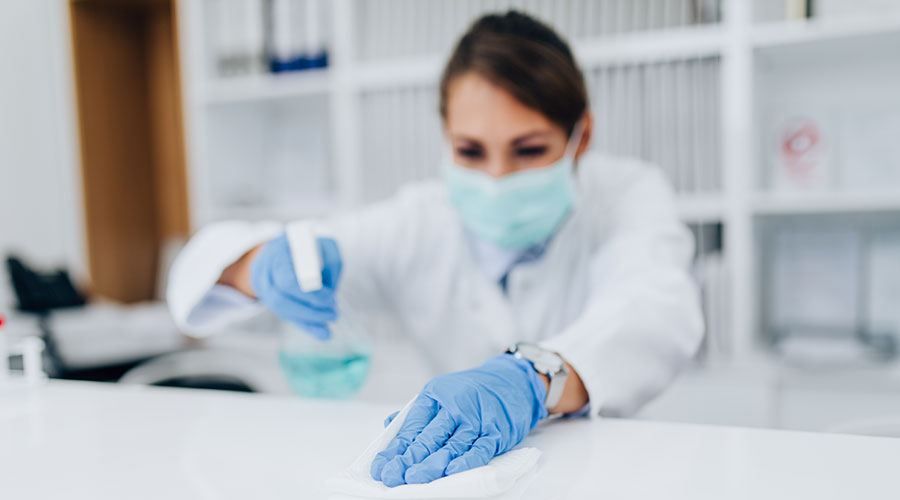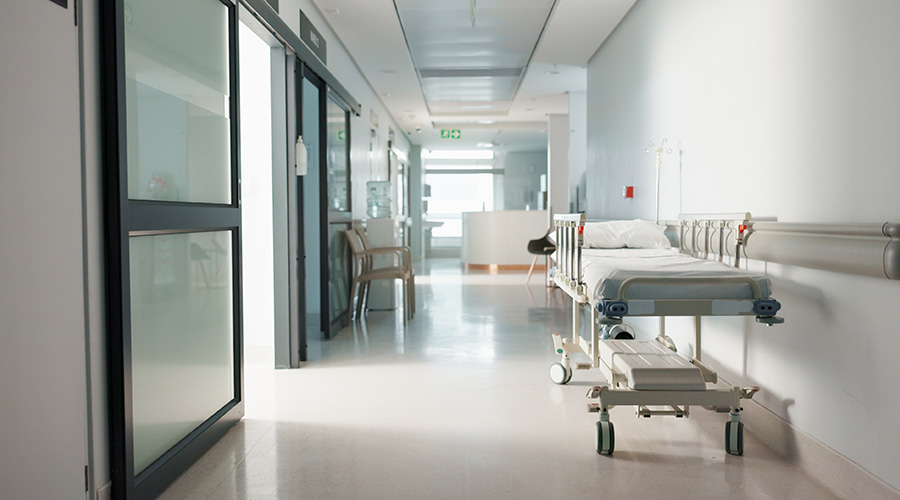In the complex world of infection prevention in hospitals, the question of who performs the cleaning — whether they are part of the hospital’s internal staff or from an external contractor — is receiving increasing attention. Three fascinating studies help shed light on this issue.
The first study, from Chile (Zambrano et al., 2014), examined cleanliness levels using adenosine triphosphate (ATP) bioluminescence, comparing internal and external cleaning teams. Before training, only 25 percent of surfaces cleaned by internal staff were found clean, compared to 68 percent for external staff. But after an educational intervention, internal staff produced 80 percent clean surfaces — a dramatic and significant improvement.
The second study, from Uganda (Mujasi & Nkosi, 2018), analyzed the cost-benefit of outsourcing versus internal staffing. Findings showed that outsourcing required a higher investment, but if quality is monitored and measured, it pays off. Without quality control, the higher costs are not justified.
The third study, from India (Mohammad et al., 2022), emphasized that the success of outsourcing hinges on clearly defined parameters: workload distribution by risk zones, supervision, documentation, standardized materials and performance-based incentives. Advanced tender documents include sanctions, monitoring mechanisms, and professional requirements for housekeeping supervisors.
Additionally, a comparative article from 2023 by Surbhi Dixit highlighted that the key to success does not lie in who performs the cleaning but rather in the level of supervision, clarity of responsibilities and alignment with organizational needs. When oversight is lacking, outsourcing struggles to meet standards. But with thoughtful management, training and monitoring, the results can be more efficient and higher quality.
Now, a significant new data point might offer an alternative: A study from Argentina (Paz et al., 2019) found that introducing a dedicated hospital environmental hygiene nurse (HEHN) reduced the rate of multi-resistant organism healthcare-associated infections by 53 percent, from 4.3 percent to just 2 percent.
This nurse was part of the infection control team, not the cleaning contractor’s team. She directly supervised cleaning procedures through observation, fluorescent marking and environmental sampling. She also trained new workers, clarified responsibilities and significantly improved staff motivation.
While infection prevention nurses play a crucial role in developing and implementing infection control protocols, directly managing the hospital’s environmental services department is typically not within their traditional scope of practice. The optimal approach is a collaborative, multidisciplinary model where infection prevention nurses provide expertise and oversight, while trained housekeeping managers handle daily operations.
Best practices recommend a multidisciplinary approach: Infection prevention nurses should collaborate with environmental services managers to develop, implement and monitor cleaning and disinfection protocols. They also should provide oversight, training and feedback, ensuring that environmental services practices align with infection control standards, but they do not manage daily housekeeping operations directly.
It is not the identity of the cleaning team — internal or external — that matters most, but the quality of training, supervision and oversight. When there is a dedicated, independent and professional figure overseeing the cleaning process, the result is not only cleaner surfaces but fewer infections.
J. Darrel Hicks, BA, MESRE, CHESP, Certificate of Mastery in Infection Prevention, is the past president of the Healthcare Surfaces Institute. Hicks is nationally recognized as a subject matter expert in infection prevention and control as it relates to cleaning. He is the owner and principal of Safe, Clean and Disinfected. His enterprise specializes in B2B consulting, webinar presentations, seminars and facility consulting services related to cleaning and disinfection. He can be reached at darrel@darrelhicks.com, or learn more at www.darrelhicks.com.

 Healthcare Is the New Retail
Healthcare Is the New Retail Bridgeway Behavioral Health Services Launches Campaign to Renovate Health Center
Bridgeway Behavioral Health Services Launches Campaign to Renovate Health Center Ground Broken for New North Dakota State Hospital
Ground Broken for New North Dakota State Hospital AI Usage for Healthcare Facilities
AI Usage for Healthcare Facilities Ground Broken on Pelican Valley Senior Living Modernization Project
Ground Broken on Pelican Valley Senior Living Modernization Project